Camera Shot Types/Distances
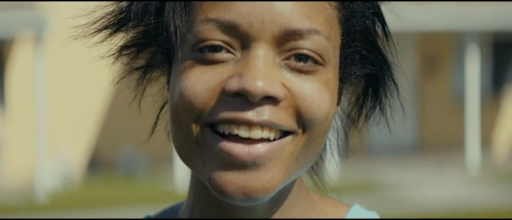
This is a BCU shot (big close up shot)
I think the director did this to make the audience feel as if they are seeing directly from Chiron’s point of view, which helps them feel more emotionally involved as you can see the exact emotions that run through his mother’s face. It feels like she is talking directly to you, the viewer. The shot that was also used out of nowhere during the middle of the film, and the vivid change was successful in really making the audience feel like they had to truly focus and listen to the words she has to say. It’s emotionally fantastic and compelling.
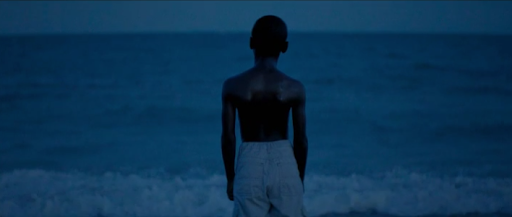
This is a long shot (LS) and also a back shot.
The use of these shots really ties in with the coming-of-age genre as it seems like a reflective scene, with the characters back to the camera as he overlooks the sea. It not only adds depth and is a visually beautiful shot, but it creates an emotional impact without the audience even having to see Chiron’s facial expressions. The audience feel like they are seeing from afar as Chiron progresses through his life and learns lessons, making the audience feel connected to him.
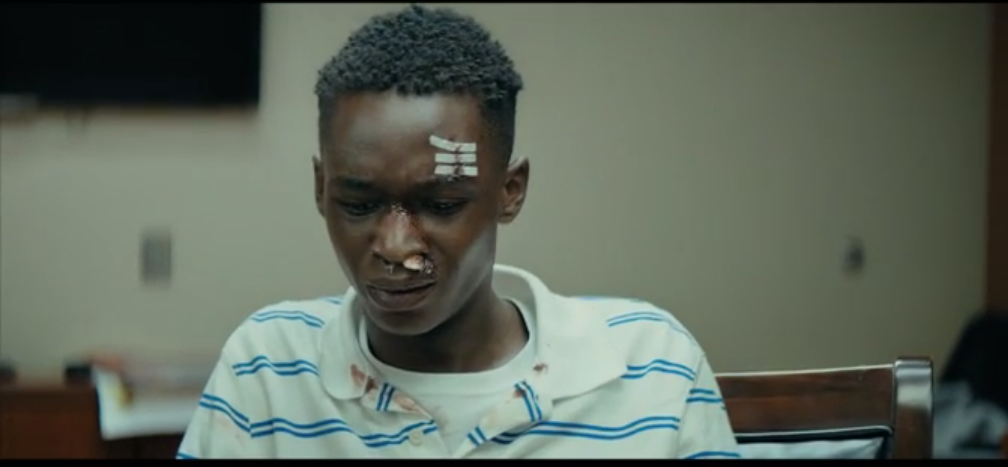
This is an MCU shot (Medium close-up)
This shot is used in this particular scene so that both the character and the background can be seen with an equal presence, which is important because we need to see the emotions that Chiron is feeling after this very tense moment but we also need to see the setting that he is sitting in: the school office/nurse environment, which can highlight Chiron’s vulnerability.
Camera Angles

There are two examples of camera angles in this picture: on the top there is a lower angle, and on the bottom, there is a higher angle. Despite this being two different examples, they work together in the same scene to create a significant meaning- it not only shows the power-imbalance between mother and son but in the higher angle when Chiron is staring back at his mother, we can feel a sense of a little fear and alienation. It feels as if Chiron is completely disassociating while his mother screams and belittles him.
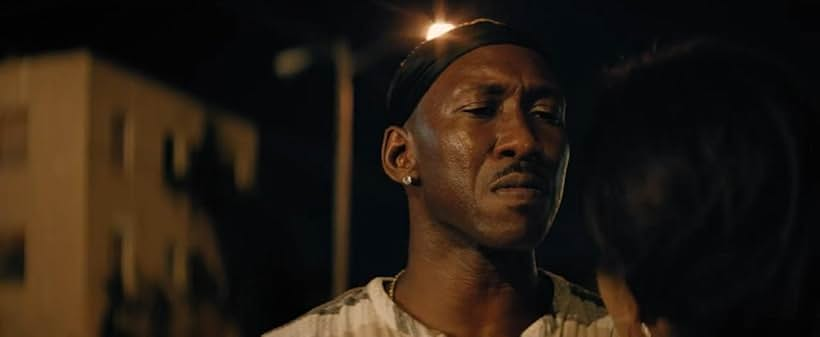
This is a low camera angle.
The director’s choice of using this angle in this particular shot is helpful to portray to the audience Juan’s disdain for Chiron’s mother as he looks down at her. It also makes her character seem a lot more inferior to his.
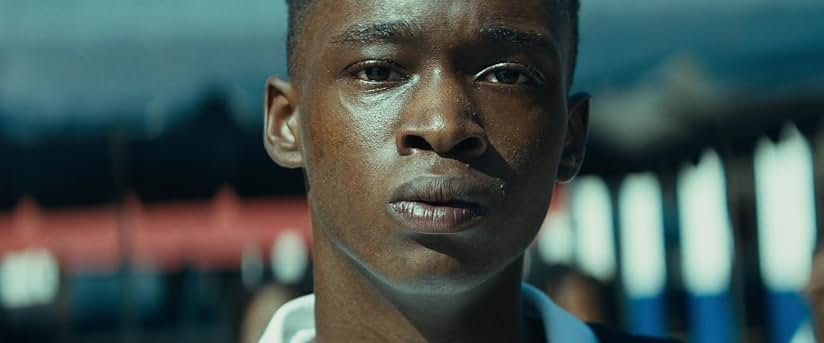
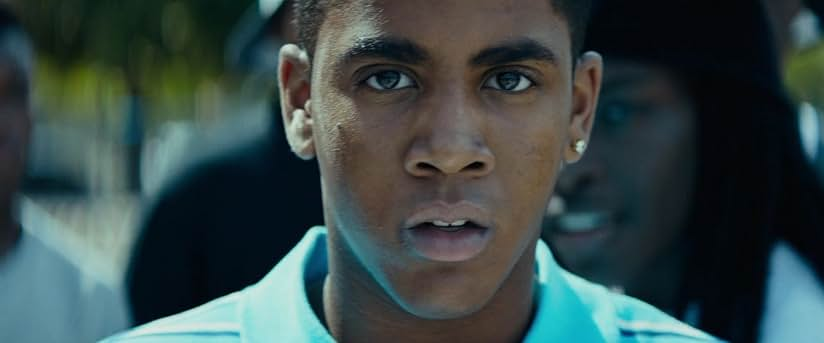
These are eye-level shots.
Used within the same scene, this type of angle while Chiron and Kevin stare at each other feels intimate. It feels, to the viewers, as if we are looking deeply into these characters as their emotions clearly run through their faces- Chiron’s perseverance mixed with Kevin’s guilt/fear. This can make the audience feel sympathy for them both. It also demonstrates how they are both fully focused on each other, as they sort of communicate silently.
Camera Movements
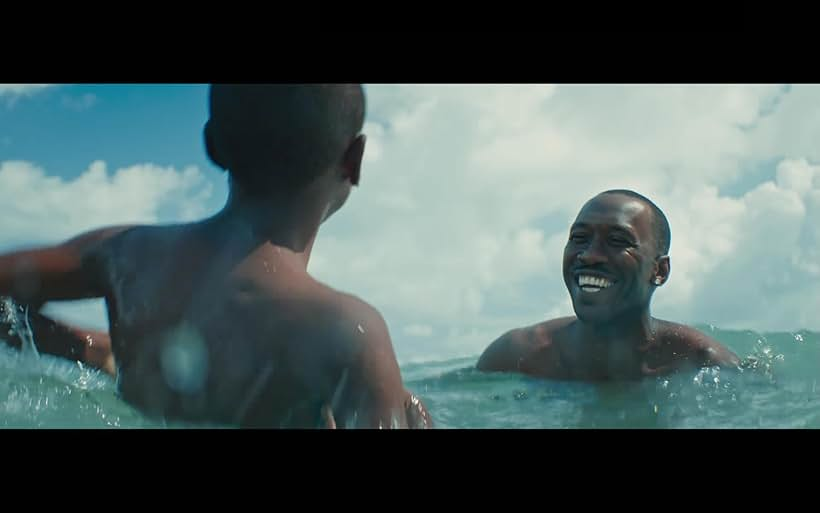
In this scene the camera freely tracks the characters.
This scene was filmed from a half-submerged perspective. The camera freely moves around Chiron and Juan while it dips and splashes in the water. This makes it feel as if we aren’t just watching the scene but actively participating in it; it feels intimate and it feels like we are there due to the tracking of the camera. Additionally, it is amidst a highly emotional and pivotal moment where Chiron is starting to finally trust this adult as he battles internal conflicts, and the waves that bounce through the camera are a direct portrayal of that journey.
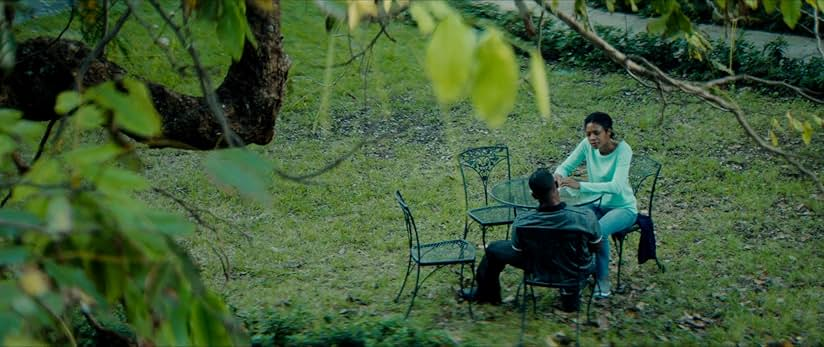
In this screen the camera slowly pans to the right.
This is used so that the area where Chiron and his mother sit can slowly come into focus as we feel like an outsider to this private conversation. It sets up the location and shows how isolated the characters are.
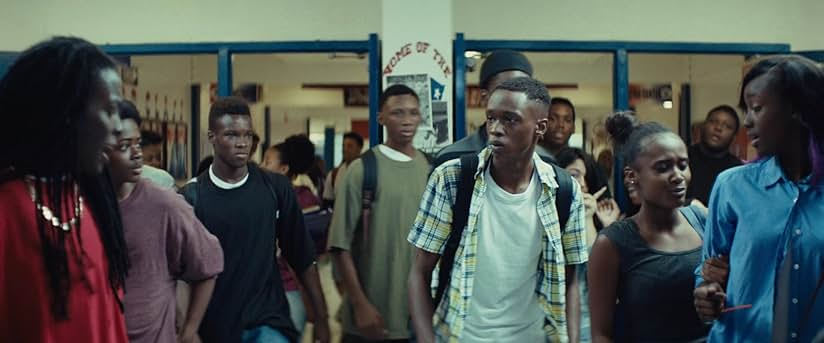
In this scene the camera tracks out.
After his bully pushes him, the camera slowly starts to track out, in sync with the other students as they walk forwards, as Chiron stays back and starts to disappear from the frame. It’s a visual metaphor for the way Chiron is being treated at school, and in life in general, that tells the audience the conflict inside of him.